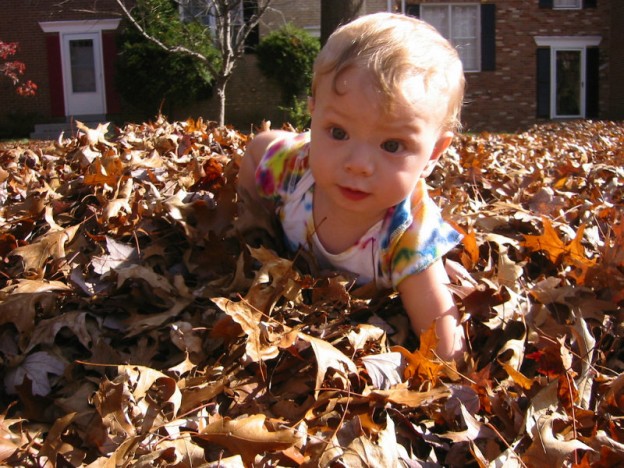
Therapy Tips
14 Fall Sensory Activities For Your Child With Special Needs
“Falling” Into Sensory Strategies
Fall is a great time of year to provide your child with sensory input. With a month of school under their belt, most children start to feel the effects of an increased work load and longer periods of sitting in school. Taking advantage of the weather and fall activities can help to organize and regulate your child for continued success at school and home. Here are a few fall activities recommended by the occupational therapy department of the Kaufman Children’s Center that provide a variety of sensory input:Sensory Activities With Leaves
1. Rake The Leaves
Raking the leaves into a pile is great heavy work for your child. It helps to provide proprioceptive input to their muscles and joints, increasing body awareness and strength.2. Jump In The Pile
Once you have a pile, allow your child to run and jump into the leaves. This provides both some movement (vestibular input) as well as crashing (proprioceptive input).3. Hide And Seek
Hide familiar objects in a pile of leaves and have your child try to find them. This provides your child with tactile (touch) input as well as works on some discrimination skills. To make it more difficult, have them try to find the objects with their eyes closed and guess what the object is.4. Create Works Of Art
Have your child make a rubbing of a large leaf that they found. Place the leaf under a piece of paper and have them color the paper, transferring the image of the leaf. Have your child use small or broken crayons to facilitate a tripod grasp.5. Make A Leaf Race
Have a leaf blowing race. Give your children a straw and instruct them to blow a leaf across a table or across the sidewalk. This activity provides oral motor input as well as heavy work through their mouth.6. Make A Leaf Person
Make a leaf person. Have your child glue different shape leaves on a piece of paper to make a person. Draw on arms, legs and other body parts. This is a fine motor activity that also works on promoting body awareness.7. Nature Hunt!
Go on a nature hunt! Provide your child with tweezers or tongs. Have them pick up acorns and pine-cones using the tongs. This activity will work on increasing grip strength and precision.Sensory Activities With Pumpkins
8. Carve A Pumpkin
Carving a pumpkin (with assistance) facilitates fine motor skills as well as providing a great wet tactile activity. Have your child scoop out the inside and play in the mess. Picking out the seeds to toast works both on a pincer grasp as well as provides a great snack.9. Pumpkin Bowling
Use pumpkins as bowling balls. Bowling with pumpkins provides your child with heavy work through lifting the pumpkins as well as some object manipulation skills through rolling the pumpkin towards a target.10. Pumpkin Races
Have your children compete in pumpkin races. This requires them to race (through obstacles if desired) while carrying a pumpkin. This activity will help with motor planning and agility as well as provide your child with vestibular and proprioceptive input.Biking & Walking Activities
11. Bike Rides
Bike riding is a great activity while the weather is nice and is a great way to provide your child with movement. It also works on bilateral coordination and balance.12. Wagon Pulling
Pulling a wagon is a great form of proprioceptive input through heavy work. Placing heavy objects in the back of the wagon intensifies this as well as works on strengthening.13. Scavenger Hunt
Have a scavenger hunt. Make a list of common fall objects and have your child look for them. More than one child can race to see who can find the most objects. This activity works on visual perceptual skills and discrimination.Sensory Input Through Finger Painting
14. Create Fall Colors
Finger paint is a great medium to provide your child with tactile input. It can also be done outside to minimize the mess. Have your child make a tree trunk by putting brown finger paint on their palm and forearm and pressing it on the paper. They can then use various fall colors to put “finger print” leaves on the branches. For children who are more sensitive to tactile input, allow them to use a paintbrush or have a towel ready for them to clean their hands. Hopefully with these fun filled fall activities, your child can receive adequate sensory input for continued success in school and home.Image Credit: wowitsstephen
Tell us what your favorite fall activities are in the comments below! This post was put together by the occupational therapy department of The Kaufman Children’s Center for Speech, Language, Sensory-Motor, and Social Connections. Kaufman Children's Center provides individual speech and language therapy, occupational therapy, sensory integration therapy, social skills instruction, and applied verbal behavior therapy for children from birth to 17 years old.Top Photo Credit: horizontal.integration


